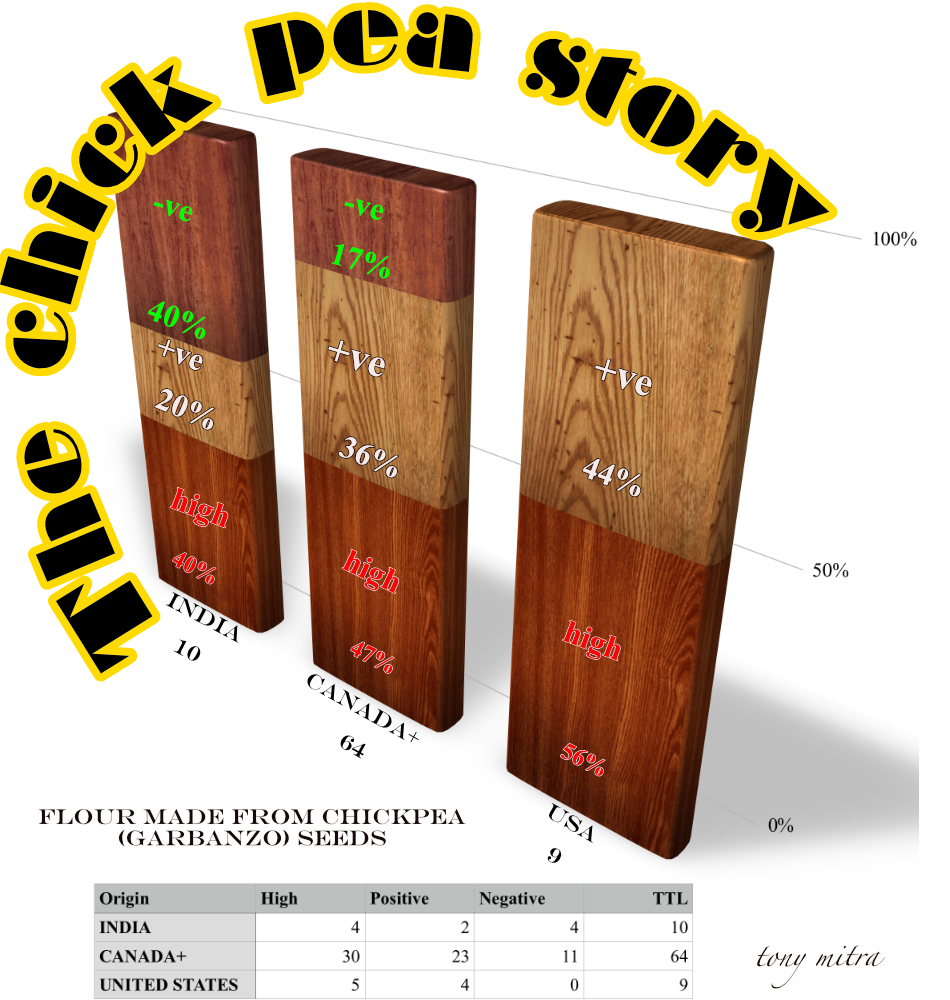Canadian Food Inspection Agency (CFIA) had nearly 8,000 records of foods tested for presence of glyphosate, which I came to acquire a copy of after years of working on this issue with various levels of the Canadian Government going back some number of years, to the time when Mr. Harper was the Prime Minister. My interactions started with the issues that Canada at the time did not even have a lab that would test foods for glyphosate, which I considered to be an outrageous and unacceptable state of affair. Thankfully, within a year, labs started getting themselves accredited for testing foods for glyphosate, more or less concurrent with the time when World Health Organization classified glyphosate to be a probable carcinogen.
While this matter was kept outside of the media or Government outlets, i was fully aware of a scheme going on to test foods available in Canada, of both Canadian and imported kind, for glyphosate. This started my next level of effort with the Government to get my hands on the food test records. In between all this there has been letters, meetings, petitions and motions initiated by me and sent to Health Ministers spanning two governments, demanding disclosure on various aspects on glyphosate, from its approval for agriculture, to setting of MRLs, to its aerial use over forests, prairies and watersheds. Those details may not have a direct relation with this blog, but all these efforts and years of involvement brought me to where I was three months ago, sitting on a huge pile of test records on foods collection in Canada, and around a thousand and five hundred of those records involved foods originating in the United States, and a similar number for foods grown in Canada. India and China provided the most samples after USA and Canada.
All these records were scanned by me and converted to editable text and numbers using optical character recognition software, and error corrected. Finally, multiple giant spreadsheets were created to sort through the data for analysis. That prompted me to write and publish an online e-Book to alert the people. I named it “POISON FOODS OF NORTH AMERICA”.
The book is over 300 page long and has more than 300 tables, along with charts and images. Many of the tables give the actual raw data with regard to glyphosate content and description of the food sample, its origin etc.
Some of the findings were as expected while some are totally unexpected, and often shocking.
Here are a few examples:
- Canada and USA produce the most toxic foods on the planet, with regard to glyphosate contamination.
- Within North America, Canada produces foods with significantly higher levels of glyphosate.
- Within Canada, the west is where one can find more glyphosate contaminated foods than from other regions within Canada.
- Western Canada is ground zero, for finding nasty foods.
- Cleanest of food suppliers are Peru, Thailand, France, South Africa, Mexico, and China. China apparently exports cleaner foods than what locals consume inside China. For example, imported foods from China, averaging 3 ppb contamination, is 28 times cleaner than foods produced in the US, and over 45 times cleaner than foods produced in Canada.
- Foods imported from Mexico is 70 times cleaner than Canadian foods and over 40 times cleaner than foods originating in the United States.
- Conventional foods desiccated by glyphosate is far more contaminated than GM crops that are roundup ready.
- Out of the main cereals, rice is about the only one that is more or less without any glyphosate, except for some rice, rice flour or rice based products produced in Canada and the US.
- Lentils and chickpea (garbanzo) produced in North America, as well as foods made with these ingredients are highly contaminated with glyphosate.
- Although soy flour may contain high glyphosate, tofu made out of soy has none.
- Wheat bran produced in Canada has an average of around 2,500 ppb of glyphosate in every sample.
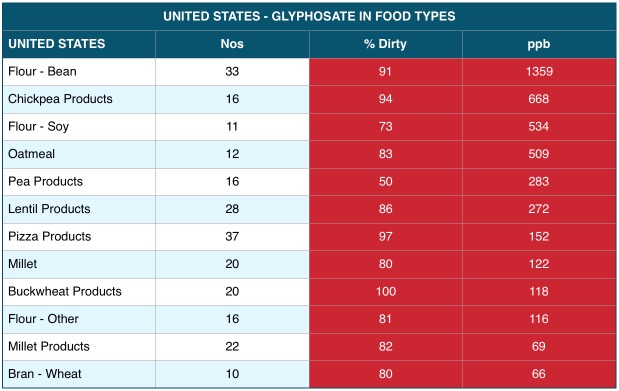
Foods from over sixty nations have been tested, but not all of them contributed large number of samples. However, a few nations did have high sample depth, USA is among them.
The table here was truncated from a long one, with each and every type of food that was recorded by CFIA to have come from the United States. Then, for now, all food types that hat had less than 10 samples were set aside.
Of the remaining samples, how many belonged to which food type was entered in the second column from left, against each food types. How many of that food type proved ‘negative’ or had to glyphosate, was checked. These two figures allowed calculations on what percentage of the samples were dirty (proved positive in glyphosate screening). Then all the glyphosate and AMPA values were added and then divided by the total number of samples for each food type, to get average ppb contamination level, which is shown in the last column.
Then the table was sorted by ppb values in descending order, and included as the first item within the subchapter of foods from the United States.
So this table is the dirty dozen of American foods.
We shall then proceed with looking at more details of some of the dirty dozen that have high glyphosate levels and high enough sample depth to provide a glimpse of what is happening with toxicity in US grown foods.
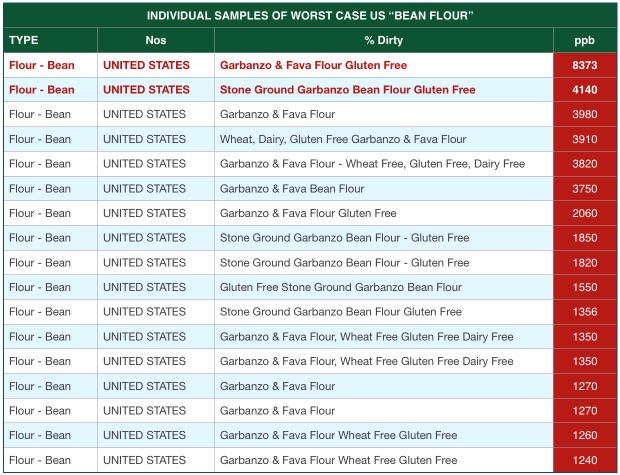
The top two items in the second table above are in violation of the MRL (Maximum residue Limit) set by the Canadian Government. What is interesting to ponder, or perhaps correspond with the authorities about, is what happens with such violations are noted. Ideally, the product should be withdrawn. Public should be notified and warned not to buy or consume it. Those that already bought this item should be advised to return it to the store and get a refund. The producer should be prosecuted. The issue should be out on mainstream media for public awareness.
None of that, as far as I can remember happened or happens. I do not remember a single instance with I was aware of such foods being recalled or public warned.
So, are we to suppose that those MRLs which are themselves set arbitrarily without providing any proof of their authenticity, are also not being implemented? In our food safety mechanism we might have a reproduction of the “wild west”.
In the case of violations on foods imported, in this case from the US, should the US Government and public also not be notified? Is anybody from the US aware of this situation?
I use the term toxic and poisonous interchangeably to mean the same thing, and I deny the mainstream any right to control the meaning of the terms toxic or poisonous with regard to glyphosate.
As long as the public is denied independently verifiable proof that glyphosate in food is safe at any level, over the lifetime of animals consuming it even in low dose, to me, all talks of glyphosate being safe is worth little more than magic or voodoo.
Mainstream can continue to consider glyphosate as safe, and I shall continue to believe it is the most dangerous synthetic chemical to have entered our food system and threatens to undo the long term health of the human society as well as all flora and fauna of the land.
And thus, the table above is the opening section of the “dirty dozen” of US foods. We shall also have more such tables covering the remaining items in dirty dozens list from USA, Canada, Unknown, and some other countries.
The book is already online, but constantly being improved, proof read, new tables, charts, subjects and value added. All updates should be free for legal owners of previous copies. However, there is a catch. Apparently, free updates are decided on case by case basis by Amazon after receiving an application from the author. Standard guidelines provided by Amazon mentions that additional chapter and added pages do not qualify for free access to later versions of the book by folks that bought an earlier version. I did not know that till I started inquiring with Amazon. Now I am trying to impress upon them that this book is a reference and analysis of the most controvercial herbicide in our food system and there is no other book of this kind, covering data that is not available to anybody else at this point of time. And later versions cover critical data on foods form the US, a significant producer of foods that are contaminated with this herbicide. I hope to impress upon them to make a difference and allow free updates to owners of earlier copies.
Otherwise, I would suggest that potential readers might like to wait for about a weak or two before purchasing the book. For all these confusions, the price of the book is lowered temporarily by a few dollars. It will be back up to around $ 9.99 as soon as sections covering US foods and foods from China and India are completed. Target is by the first week of April, 2017.
The book can be found in Amazon, NAMED “Poison foods of North America”. Book cover, designed by me, is shown here with the link.
I also made a three minute video on the book, as shown below.
Lastly, this book is not designed to add to the debate on if glyphosate is safe and at what level. I have no interest to join any such debate. I am uninterested in the opinion of the glyphosate supporting industry and their supportive political and media outlets. I live in a free country and the meaning of any word or term such as toxic or poisonous, is not owned by the industry. The meaning is not even etched in stone and changes with times depending on perception by the people.
So, the mainstream can continue to harp that glyphosate is safe. I shall continue to believe it is dangerous and unsafe at any level of concentration, until proven otherwise by independent verification and the regime of secrecy around it has been dismantled.
So who is this book for? It is for those that have, like me, already decided that glyphosate is a seriously harmful molecule in their food web and they would rather find a way to avoid it right now. Those are the people this book is for.
The mainstream science, media, political class and the regulatory authority has lost public trust on this issue. This book is not aimed at influencing their opinion. This book is for the people – the rest of us.
Tainting the Cornucopia of North America
Dr. Vallianatos, retired US-EPA scientist and author of the book “Poison Spring” read and reviewed this book on Huffington Post. Link.

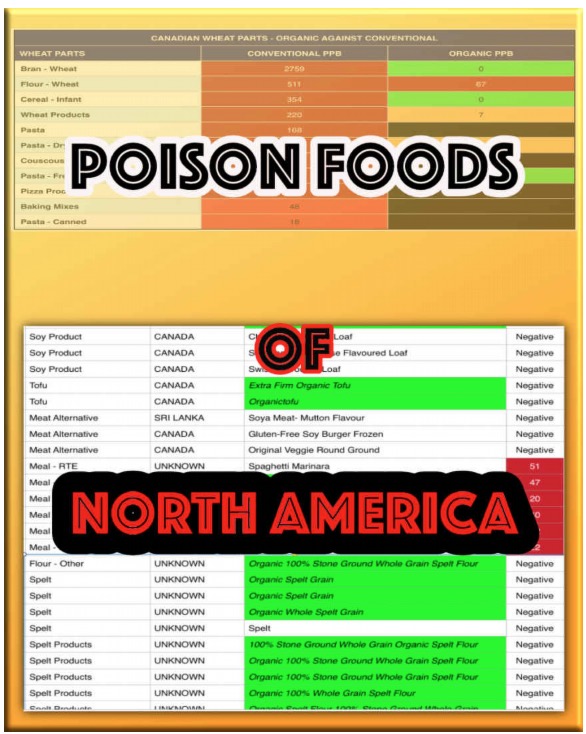

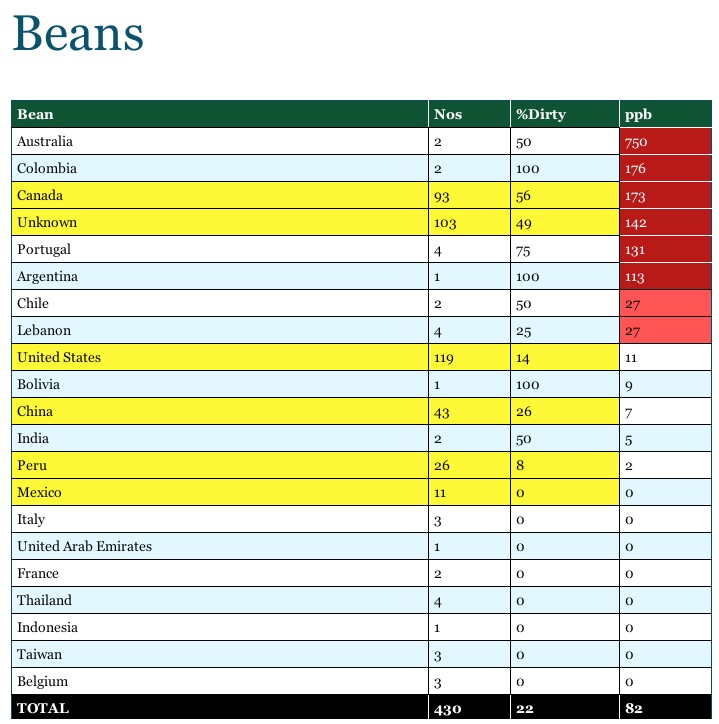
 There is further news coming from some reportedly leaked comments from within US-EPA that the manner in which glyphosate safety test documents and data has been accepted has apparently not gone well with everyone in EPA. Well, it is almost 40 years since glyphosate has been unleashed. It is high time that approval of glyphosate was put under scrutiny.
There is further news coming from some reportedly leaked comments from within US-EPA that the manner in which glyphosate safety test documents and data has been accepted has apparently not gone well with everyone in EPA. Well, it is almost 40 years since glyphosate has been unleashed. It is high time that approval of glyphosate was put under scrutiny.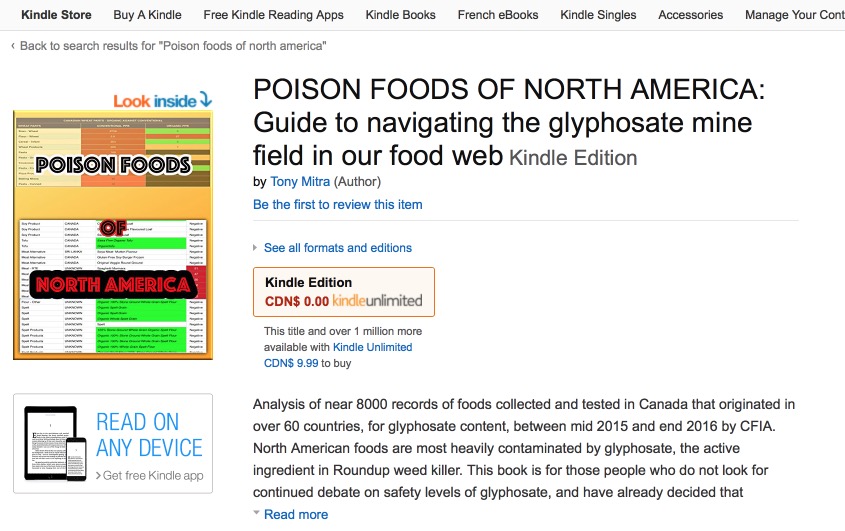
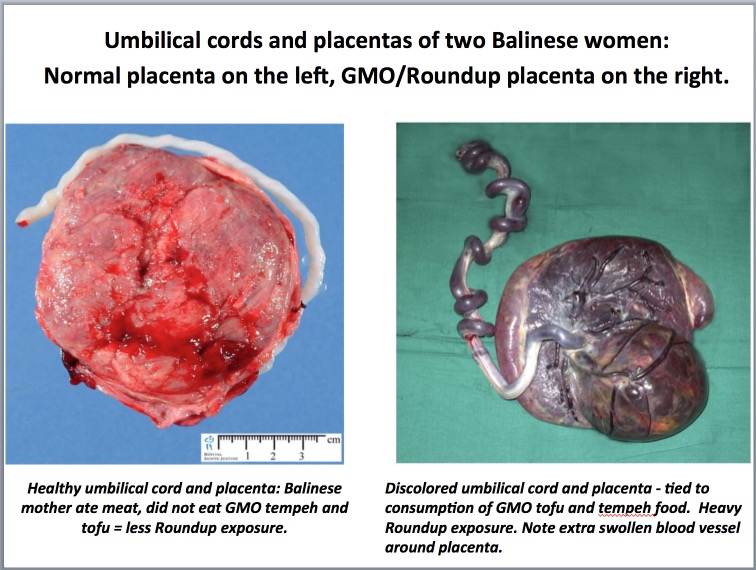

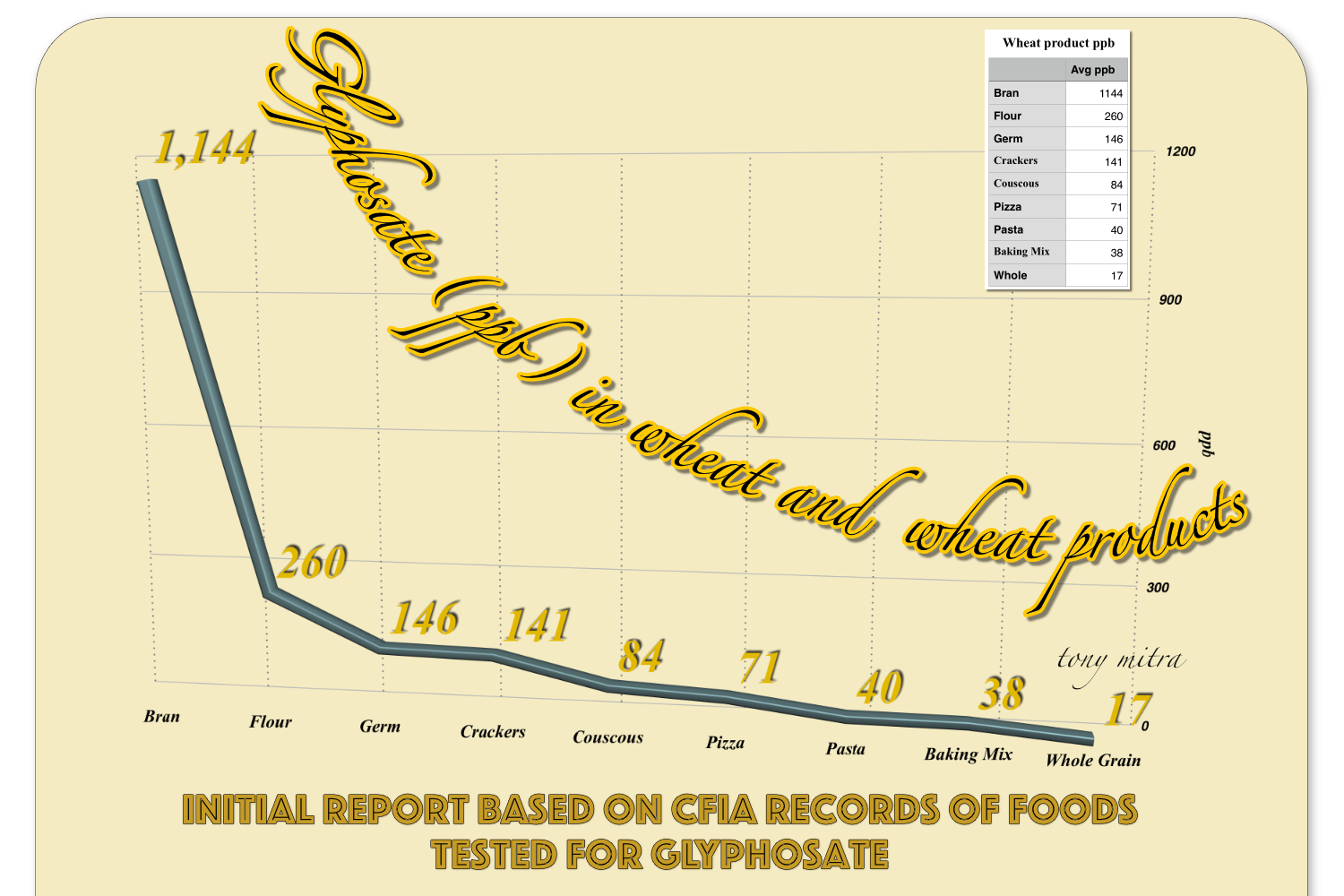
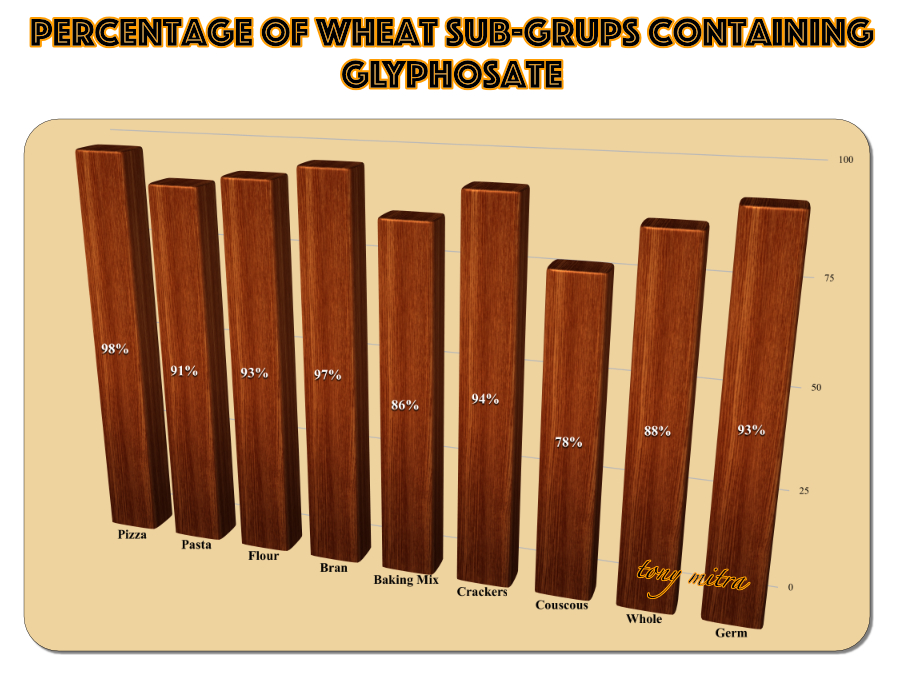
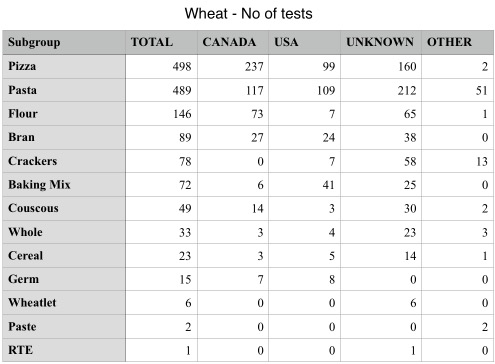
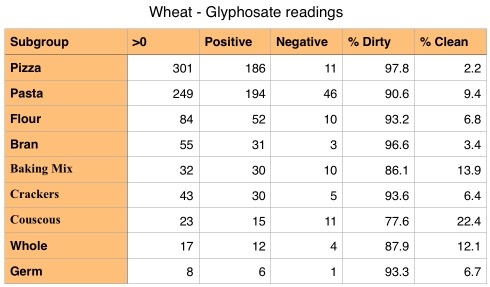
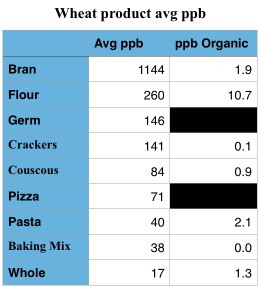
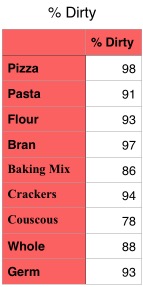
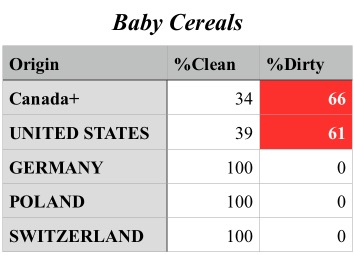
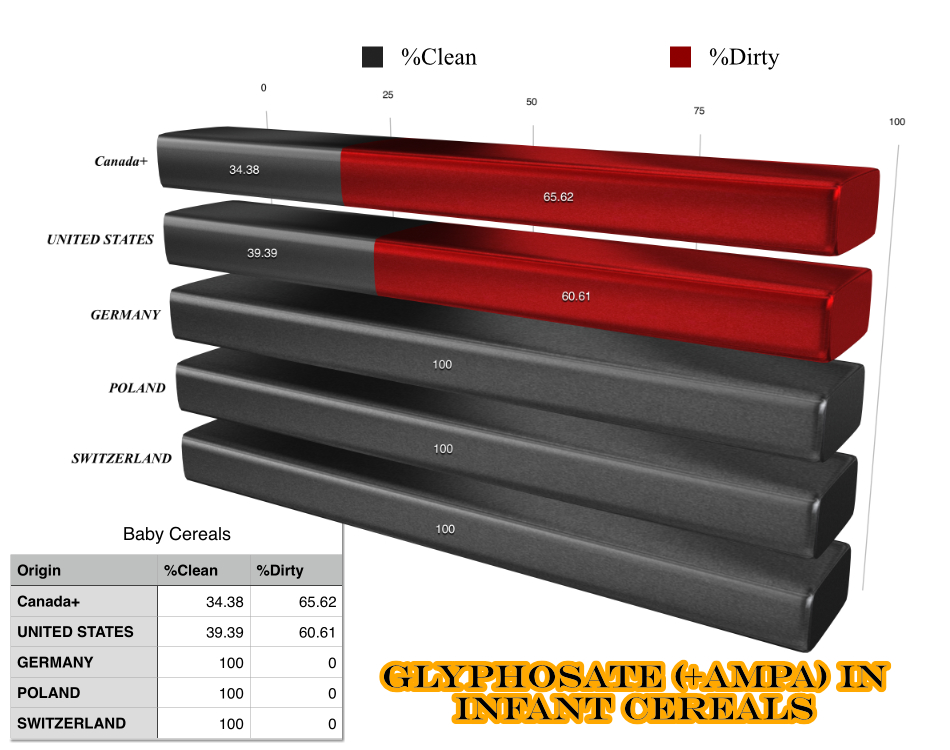
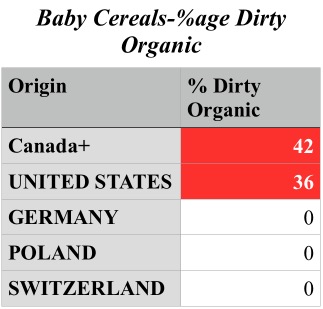 I found a few curious entries within the North American samples, which could be a give-away of its brand name. Three samples were described as Leapin’ Lemurs, Choco Chimp, and Koala Crisp. All of them were entered under infant cereals. I could not figure out what ingredients were used here, such as wheat, or oatmeal or rice etc, so I googled the names. It turned out, these are products by “Nature’s Path“. All three of them contained no glyphosate at all. So, out of this horror story, there was a sort of silver lining.
I found a few curious entries within the North American samples, which could be a give-away of its brand name. Three samples were described as Leapin’ Lemurs, Choco Chimp, and Koala Crisp. All of them were entered under infant cereals. I could not figure out what ingredients were used here, such as wheat, or oatmeal or rice etc, so I googled the names. It turned out, these are products by “Nature’s Path“. All three of them contained no glyphosate at all. So, out of this horror story, there was a sort of silver lining. I don’t have an infant at home and I do not like to eat processed food any more. However, I am very aware and conscious of the fact that infants and kids are far more vulnerable to illness and auto-immune triggers due to their low body weight and insufficiently developed immune system.
I don’t have an infant at home and I do not like to eat processed food any more. However, I am very aware and conscious of the fact that infants and kids are far more vulnerable to illness and auto-immune triggers due to their low body weight and insufficiently developed immune system. Attached here is a table of the infant baby cereals for only three countries, to highlight my point – Unknown, Canada and USA, where Canada and unknown are kept separate. As you an see, the results bode much worse for Canada, with only 13% clean and 87% dirty. Another way of looking at it might be, if you are buying infant cereals, and if you can find “Canada” in the label somewhere – don’t buy it. Chances of you getting a slow dose of glyphosate would be seven our of eight !
Attached here is a table of the infant baby cereals for only three countries, to highlight my point – Unknown, Canada and USA, where Canada and unknown are kept separate. As you an see, the results bode much worse for Canada, with only 13% clean and 87% dirty. Another way of looking at it might be, if you are buying infant cereals, and if you can find “Canada” in the label somewhere – don’t buy it. Chances of you getting a slow dose of glyphosate would be seven our of eight !
